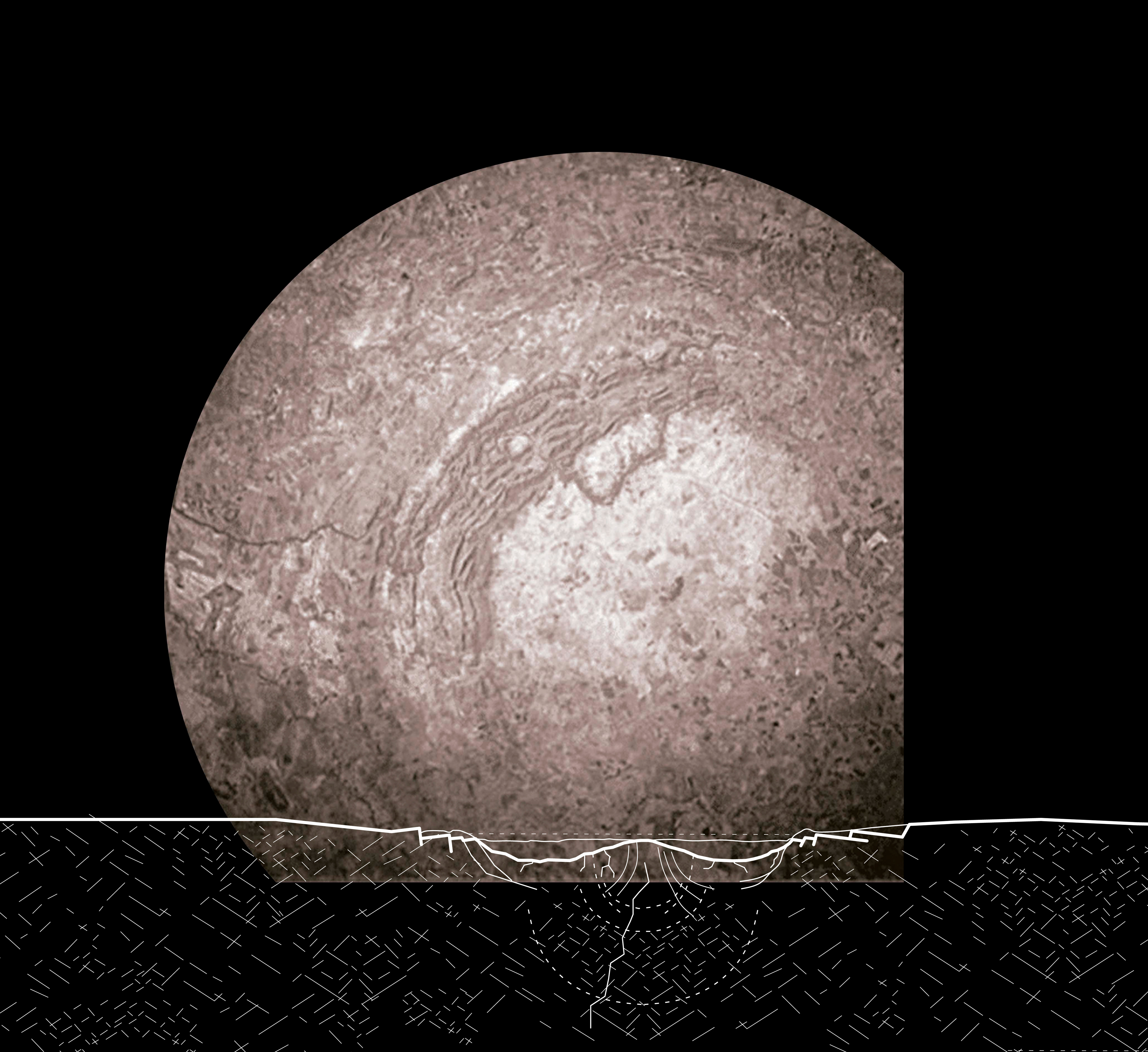Vredefort Dome
“
Why did gold mining in South Africa need to dig so deep, and be so explosive? Look at the Vredefort Dome.”
The Vredefort Dome is the oldest and largest astrobleme, or meteorite impact site, in the world, formed an estimated two billion years ago, when a ten-kilometer-wide meteorite impacted the Earth approximately one-hundred-and-twenty-kilometers southwest of the present day South African city of Johannesburg.1 The impact resulted in a three-hundred-kilometer-diameter impact structure that thinned the Earth’s crust and which, overtime, lifted into the present day dome, now eroded, exposing gneissic![]() granites of the middle and upper parts of the crust.
granites of the middle and upper parts of the crust.
The force of the impact generated new materials and compounds within the crust of the Earth, one of which was gold, intermixed with uranium. This would preserve the integrity of these gold deposits for millions of years, as opposed to other gold materializations near the surface of the Earth which would be susceptible to water and wind action. This condition would directly influence the bulk of mining methods used to extract these gold deposits during South African gold mining operations, which relied on explosives and deep-earth extraction.


Image source: Geological Journeys by Norman and Whitfield, 2006
References
1. World Heritage Data Set. ¨Vredefort Dome¨. Accessed March 1,2022. http://www.yichuans.me/datasheet/output/site/vredefort-dome/
1. World Heritage Data Set. ¨Vredefort Dome¨. Accessed March 1,2022. http://www.yichuans.me/datasheet/output/site/vredefort-dome/